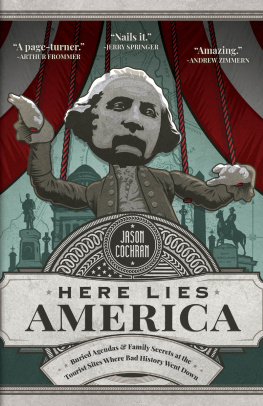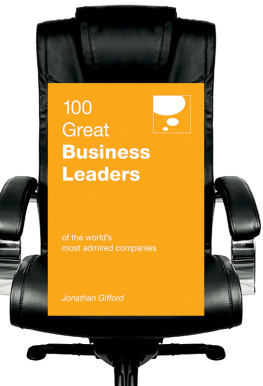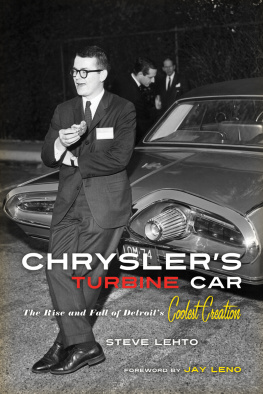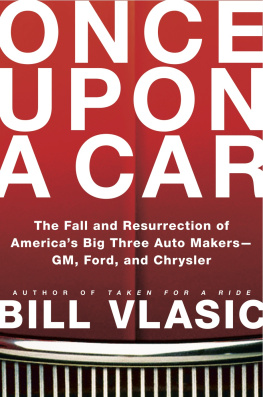The Last American CEO
Jason Vines
&
Joe Cappy

Published by Waldorf Publishing
2140 Hall Johnson Road
#102-345
Grapevine, Texas 76051
www.WaldorfPublishing.com
The Last American CEO
ISBN: 978-1-944245-10-8
Library of Congress Control Number: 2015957010
Copyright 2016
All rights reserved. No part of this book may be reproduced or transmitted in any form or by any means whatsoever without express written permission from the author, except in the case of brief quotations embodied in critical articles and reviews. Please refer all pertinent questions to the publisher. All rights reserved. No part of this book may be reproduced or transmitted in any form or by any means, electronic or mechanical, including photocopying, recording, or by an information storage and retrieval system except by a reviewer who may quote brief passages in a review to be printed in a magazine or newspaper without permission in writing from the publisher.
Dedication
This book is dedicated in memory to our late parents
George and Antonetta Mele Capizzi and Cecil Vines and to Carol Cappy who shared these turbulent times with her partner Joe Cappy until her untimely death in January 1989...And to Peggy Vines.
Introduction by Jason Vines
In December 2014, just a month after my first book launched, I got a call from an old friend. Check that: not just an old friend, but probably the greatest influence on my career; maybe my life, other than my wife and my parents.
Joe Cappy was on the line. Cappy, the last CEO of American Motors before Chrysler Corporation acquired it in 1987, had just read my book, What Did Jesus Drive? Crisis PR in Cars, Computers and Christianity, and he was now apparently inspired to tell his story in the rough-and-tumble world of the global automotive industry.
Would you help me? he asked. How could I say no; I owed my career to the man.
I was 29 years old, a kid from a small town in Iowa, then a father of two and being groomed by Cappy to move into his marketing organization for the Jeep/Eagle Division of Chrysler Corporation. The Friday before the Monday I was to join his team, I got a call from the second in command of Chrysler PR, Steve Harris. Hey, we just fired the Eagle PR guy and Joe Cappy is wondering if you can take the job?
PR, Marketing, whats the difference? Oh crap, I would soon learn, but I didnt care at the moment; I just wanted to work with Joe.
And so it began.
Cappy sent me what he had already written, but I knew we needed more. I traveled to his up-north home in Northern Michigan and over 24 hours and a round of golf the story came together. Simply put, this book contains it all: the lives and livelihoods of thousands of families on the line, sex, lies, international intrigue, conflicts of interest... and an assassination that almost altered business history. No kidding.
This book was written to be informative and entertaining, as well as to demonstrate how business situations are impacted by rational and irrational human behavior and conditions beyond anyones control. It confirms there are many instances where business decisions completely change the course of a companys future.
American Motors Corporation (AMC) is a prime example from its inception, to its demise as a stand-alone American automotive company through investments by Renault of France, to its acquisition by Chrysler Corporation.
AMC was created to keep several smaller independent automotive companies from fading away into history, like an old soldier, never to be seen again. A birthing merger took place on May 1, 1954, between Nash Motors and Hudson Motor Company, forming a new company named American Motors Corporation.
During its life span, AMC became labeled with more adjectives than one can count words like struggling, ailing, distressed, poor, failing, damaged, weak, declining, sinking, deteriorating, fading, languishing, wasting, and so on. I think you get the idea.
Somehow, American Motors managed to carry-on in the automotive industry thanks to early leaders like Charles Nash, George Mason, George Romney, and Roy Chapin, Jr.
In 1978, then-Chairman and CEO Gerald Meyers implemented a strategy that involved a French connection. The long-range plan was to have AMC concentrate on its Jeep products, while Renault would be responsible for car products derived from Renaults European passenger car lines to be built in North America and also be imported from Europe. This strategy was rational and financially sound, provided each company produced competitive products for the U.S. automotive industry.
However, both AMC and Renault were experiencing difficult financial times as their products and the markets were changing. What happened next is where this book provides an unfettered insiders view of Chryslers acquisition of AMC, the turmoil that ensued, and how assassins bullets quite possibly saved the deal.
Chapter 1 - The End of the Beginning
On November 17, 1986, Georges Besse, French automaker Renaults Chairman, was finishing up some last minute business in his office in the Renault headquarters in the western section of Paris. It was time to wrap up and head for home.
It had been a very difficult eighteen months for the 58-year-old leader of French industry, since he had been summoned by the French government to replace the popular Bernard Hanon, who had run the largest French automaker under some difficult times.
Renault had been losing large amounts of money in Europe, while financially supporting a joint venture with the smallest of the U. S. automakers, American Motors Corporation (AMC), in which it owned 46.1 percent. Renault was known as a Crown Corporation, one owned by the French government. Therefore, the government and its citizens were actually underwriting Renault and AMCs significant losses a very sensitive and explosive situation when working with a strong labor union in a socialist society.
Georges Besse had an outstanding reputation of leadership and success in many of Frances largest and most important industries. This reputation and performance allowed him more flexibility in his dealings with the government.
Besse was at the zenith of his professional career. An educated engineer, he had graduated second in his class at the esteemed Ecole Polytechnique, and went on to the prestigious Ecole de Mines, where he was fifth in his class. This education path was the entryway to the top of Frances major state-owned industries.
A peer of Georges Besse described him as a man of granite, with a dense core, high values, intelligence and sound judgment. The French government believed a change in Renaults leadership was necessary and agreed, despite no actual automotive experience, Besse was the right man for the job.
Upon accepting the position, Besse was told to minimize the funds to the Americans, right-size Renault, and stop the bleeding.
During the next eighteen months, he laid off 21,000 French workers and was bringing the company back into profitability. He did not, however, pull out of the AMC venture despite heavy pressure from the governments treasurer to do so. The labor union unrest boiled over with the loss of union worker jobs, while Renault was still financing AMC in the United States.
Besse believed, as did his predecessor Hanon, that Renault needed to participate in the U.S. market, the largest in the world, if Renault was to remain one of the worlds major automotive producers. Renault lacked an adequate dealer network across the pond that AMC provided. He also strongly believed the new Jeep products underway at AMC would be a prime factor in improving AMCs profitability in the U.S and obviously Renaults bottom line back home. Yet, his mind was still open if conditions changed.
Next page






